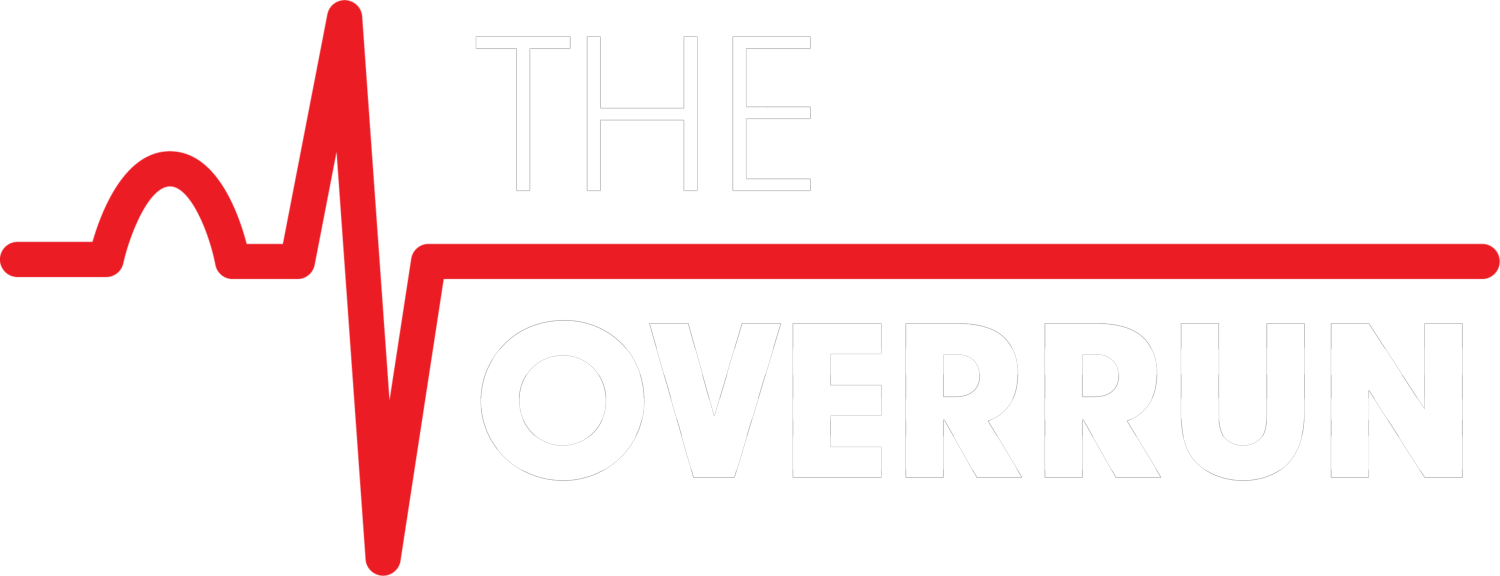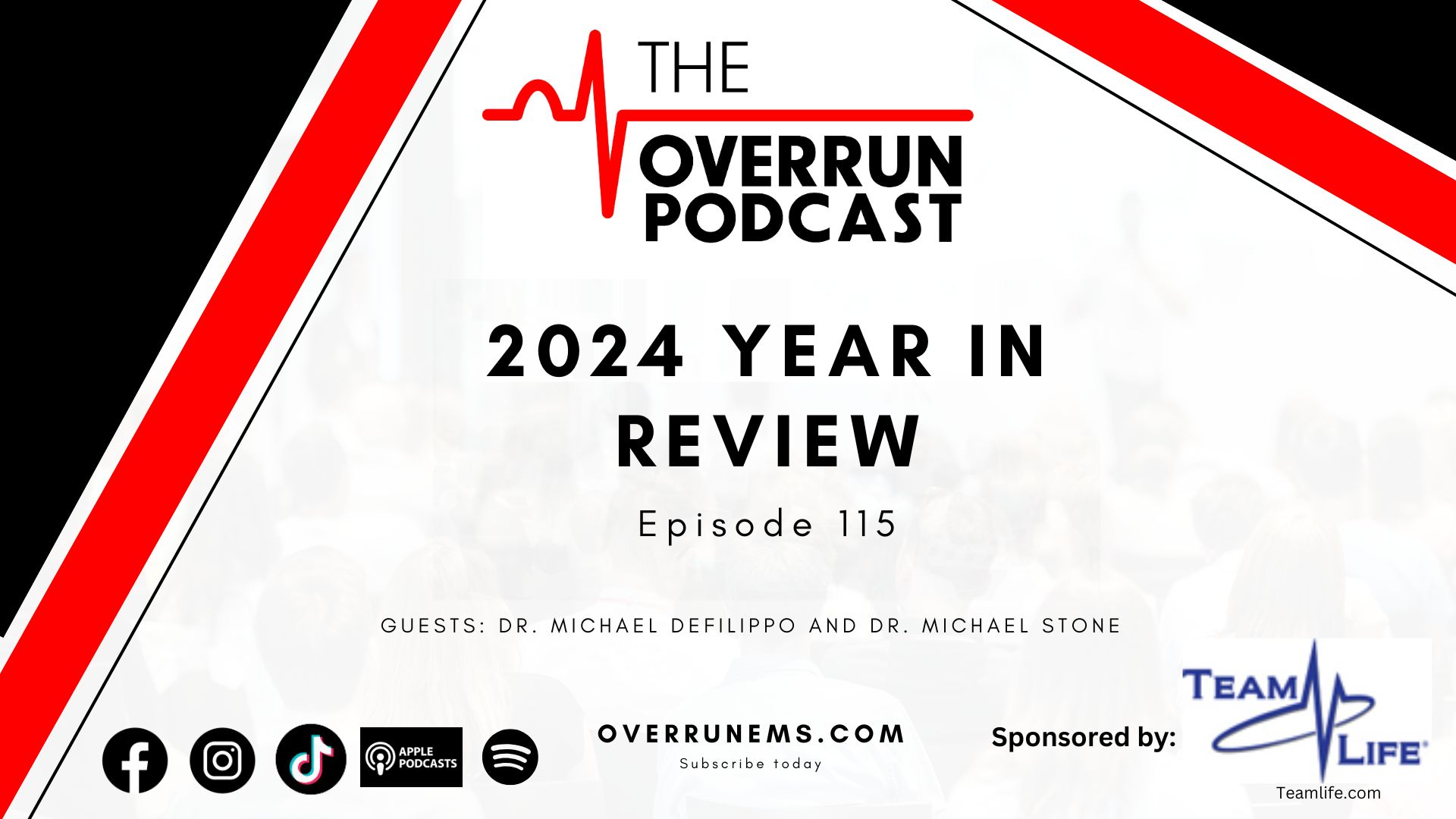Summary
In this year-end special episode of The Overrun podcast, Ed Bauter, Dr. Mike DeFilippo, and Dr. Michael Stone discuss five significant papers from the year that impact emergency medical services (EMS). The conversation covers topics such as non-invasive ventilation for pre-oxygenation during intubation, the early administration of adrenaline in out-of-hospital cardiac arrest, and the effectiveness of different routes of drug administration in cardiac arrest scenarios. The discussion emphasizes the importance of adapting practices based on new research findings and the need for further studies to validate these practices in various EMS settings. In this conversation, the speakers discuss various aspects of EMS practices, focusing on cultural differences in emergency medical services, the debate between IV and IO access during cardiac arrest, the cost-effectiveness of whole blood in trauma care, and strategies to improve cardiac arrest survival rates through training and system-level changes. They emphasize the importance of evidence-based practices and the need for ongoing education and adaptation in EMS protocols.
Takeaways
Non-invasive ventilation can reduce hypoxemia during intubation.
Practice changes in EMS can take time to implement.
Patient selection is crucial in emergency medicine.
The route of drug administration can impact survival rates.
Bundled care approaches may improve cardiac arrest outcomes.
Research findings should be adapted to local EMS practices.
Timely access to medications is critical in cardiac arrest.
Epinephrine’s role in cardiac arrest management is still debated.
Innovative studies can lead to significant changes in practice.
Cognitive aids can help guide emergency medical procedures. Cultural differences in EMS practices can impact patient outcomes.
The debate between IV and IO access in cardiac arrest is ongoing and complex.
Whole blood may offer significant cost savings and improved patient outcomes in trauma care.
Training and simulation are crucial for improving cardiac arrest survival rates.
Collaboration among different emergency services can enhance training effectiveness.
Cost-effectiveness is a key factor in implementing new EMS protocols.
Regular CPR skills assessments can lead to better patient outcomes.
Data-driven decisions are essential for EMS protocol development.
Engaging administrators with financial data can facilitate changes in EMS practices.
Continuous education and adaptation are necessary for improving EMS effectiveness.
Chapters
00:00 Introduction to Year-End Review
01:09 Non-Invasive Ventilation and Pre-Oxygenation
09:32 Early Administration of Adrenaline in Cardiac Arrest
20:24 Routes of Drug Administration in Cardiac Arrest
23:48 Cultural Differences in EMS Practices
27:41 The Debate: IV vs. IO in Cardiac Arrest
28:32 Cost-Effectiveness of Whole Blood in Trauma Care
38:57 Improving Cardiac Arrest Survival Rates
47:29 Conclusion and Future Directions
Keywords
EMS, non-invasive ventilation, pre-oxygenation, cardiac arrest, adrenaline administration, drug routes, medical research, practice change, emergency medicine, EMS, cardiac arrest, IV, IO, whole blood, trauma care, survival rates, cost-effectiveness, training, CPR
Papers:
PREOXI: https://pubmed.ncbi.nlm.nih.gov/38869091/
Route of Administration: https://pmc.ncbi.nlm.nih.gov/articles/PMC7616768/
Cardiac Arrest Survival with Practice: https://pubmed.ncbi.nlm.nih.gov/38837166/
Cost Savings- Whole Blood: https://pubmed.ncbi.nlm.nih.gov/38591174/#full-view-affiliation-1
IM Epinephrine: https://pubmed.ncbi.nlm.nih.gov/38857847/
OverrunEMS.com
TT: The Overrun
FB/IG: Overrun Productions
#DoBetter

